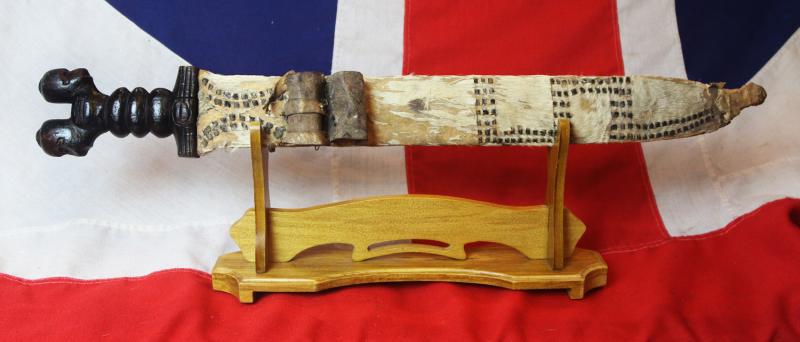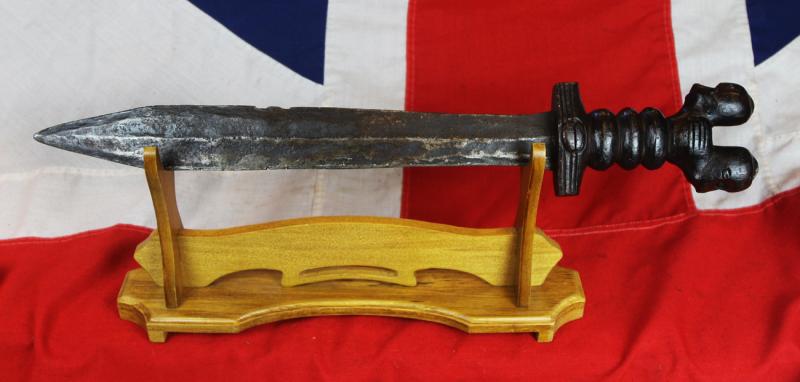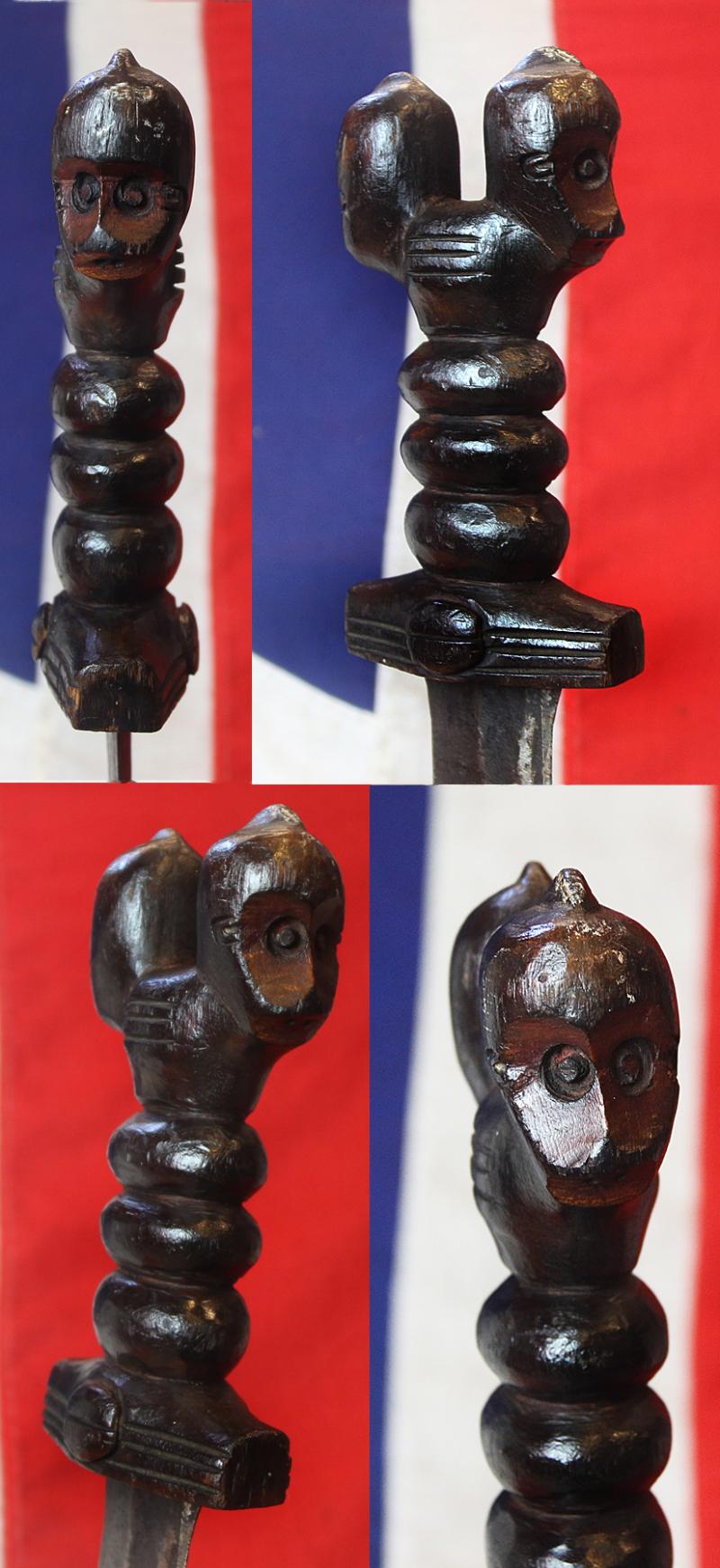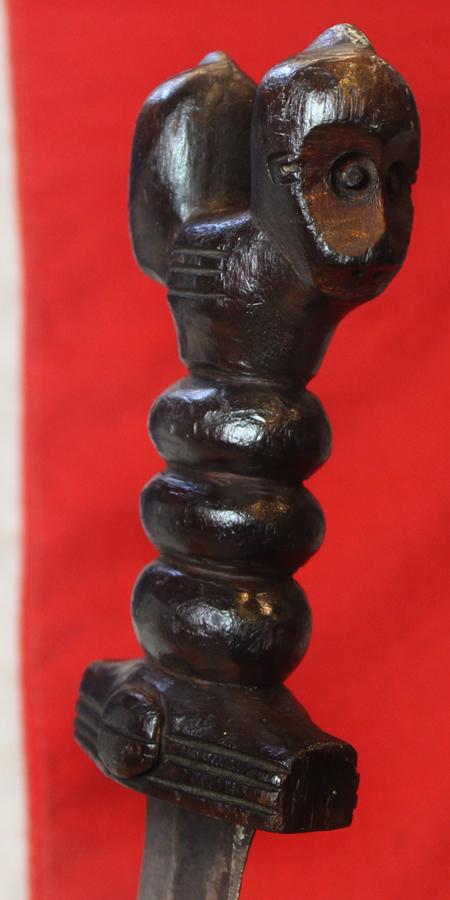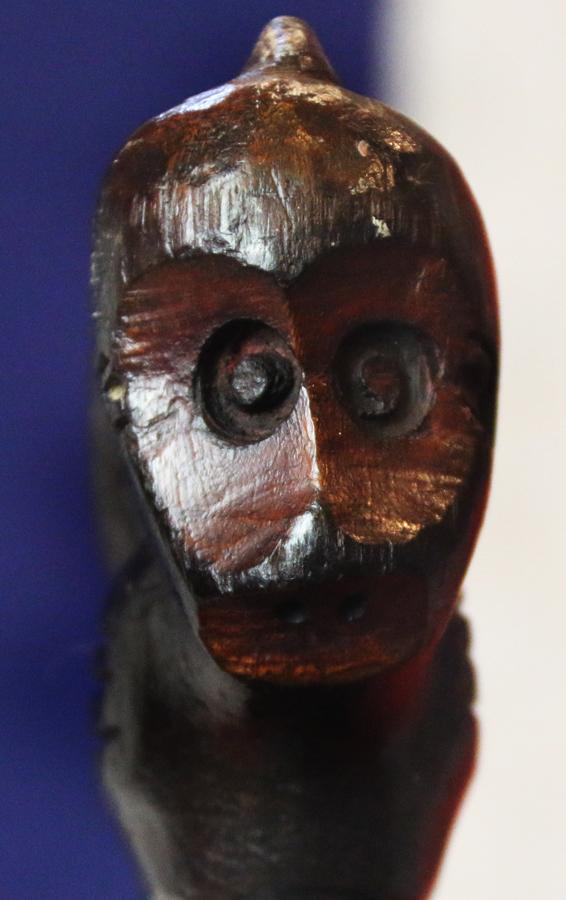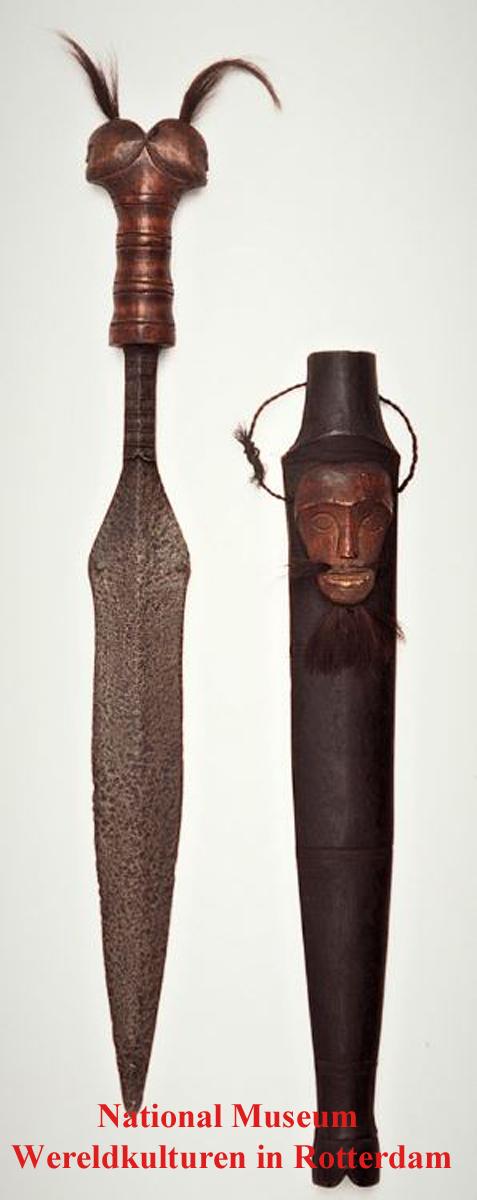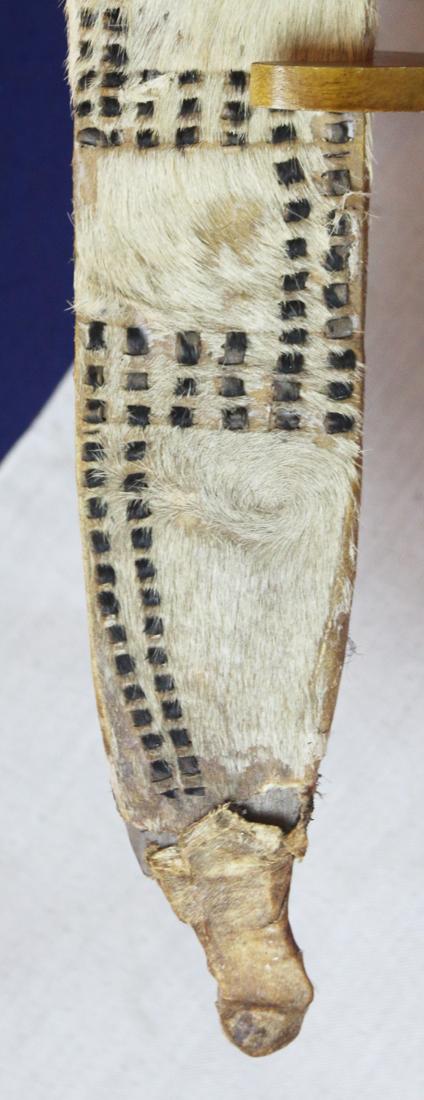A Most Rarely Seen, Antique Ceremonial, Head-Hunters Sword 'Pusaka Magic' Dohong, A Borneo, Dyak Shamen's, Kayanic Art Ritual Sword, With a Carved, Twin-Head Hilt
This is an amazing dohong, a Borneo kayanic art carved twin headed hilt sword, given to a previous owner, by a Dyak headhunter shamen, with a hardened skin scabbard, possibly goatskin. It’s condition is superb with stunning natural age patina to the carved wooden hilt. Kayanic art is most distinctive in the depiction of carved heads, with an owl-like style of heart shaped face carving
There are a lot of intriguing interest about this most rare form of shamen's dohong when they appear. They can come in either dagger or short sword form, and both are rare, but due to the fact it was likely used mostly for ceremonial "pusaka magic", many have never seen such a piece to survive. Few such ceremonies had ever been seen by Westerners, as very few outsiders visited the inner Dayak tribes during the 19th century. Of course ceremonial Dyak shamen magic was not always benign, as it could often include head-hunting, so the reticence of strangers to attempt to view such ceremonies was highly understandable
There is however, a somewhat similar carved wood hilted double headed kyanic art example in the National Museum Wereldkulturen in Rotterdam, and from all the ones we have seen, although very few in number of course, they have had all manner of bespoke differences. See photo 10 of that particular similar sword in the gallery
Dayaks are a collection ethic groups that have traditionally lived in the forests in both the Malaysian and Indonesian sides of Borneo. They are distinguished from the Malay population in that for the most part they are not Muslims and distinguished from the Penan in that have traditionally been settled while the Penan were nomadic.
The Dayaks are former head hunters and the original "wild men of Borneo." They continued to practice headhunting after it was outlawed by the Dutch in the 19th century. Up until World War II most of them were river-dwelling head hunters. Now many have been Christianized and forced into settlements. Even though they were the original inhabitants of Borneo they are now greatly outnumbered by Malays and Indonesians. It is believed that most Dayaks lived along the coast until they were driven inland after the arrival of the Malays.
Dayak "psycho-navigators” use visions and dreams to help them find their way in the forest. Dayak shaman practitioners of the "Old Snake religion” describe a hidden highland lake where enormous aging pythons enjoy dancing under the light of the full moon to honor the forest god Aping. Many Dayaks are Christians who have incorporated animists concepts onto their belief scheme. Missionaries went through the trouble of backpacking in paints and brushes to make hellfire scenes on the sides of longhouses. On the positive side missionaries have helped the Dayak clear landing strips which can be used for medical emergencies.
James Brooke wrote in his journal in “Expedition to Borneo of H.M.S. Dido for the Suppression of Piracy”: “The Kayans of the north-west coast of Borneo have one custom in common with the wild tribe of Minkoka in the Bay of Boni. Both the Kayans and Minkokas on the death of a relative seek for a head; and on the death of their chief many human heads must be procured: which practice is unknown to the Dyak. It may further be remarked, that their probable immigration from Celebes is supported by the statement of the Millanows, that the Murut and Dyak give place to the Kayan whenever they come in contact, and that the latter people have depopulated large tracts in the interior, which were once occupied by the former. Source: “The Expedition to Borneo of H.M.S. Dido For the Suppression of Piracy” by Henry Keppel and James Brooke (1847).
The Dayak perform elaborate death ceremonies in which the bones are disinterred for secondary reburial. The Ngaju Dayaks in the Mendawai area of Kalimantan keep alive their ancient burial rituals called Tiwah. Participants wear bizarre masks, with owl-like heart shaped faces, sing, and stage mock attacks. They exhume the bones of the dead, anoint and touch the bones and re-intern them in family “sandung”. (House-shaped boxes on stilts). In the old days headhunting was often include in the ritual.
Interestingly, despite returning from the darkest regions of the interior of Borneo, with this gifted sword, by the original vendors father, a former merchant ship captain, we were reminded, due to a mention from a regular viewer of our site, that we once had a somewhat similar style prestige sword from the Bamum or Tikar people of Cameroon. A tribe known for its similar highly talented artistry and carving. We couldn’t help wondering if there could once possibly have been a connection of some sort between these two native peoples due to the similarity of this wood-carvings artistry, despite around 7,000 mile distance between these peoples across the Indian Ocean. Could the Tikar peoples have made swords inspired by the Borneo version, or indeed could it be the other way around, and a Tikar sword found its way to Borneo. We may never know.
The captains son mentioned his father had a b&w photograph with the entire tribe’s elders after gifting him this sword. Apparently he became a most favoured ‘foreigner’ with the tribe due his supply of important necessities to them in ‘difficult times’. This may have been during the imminent Japanese invasions of that part of the world around the Indian Ocean in WW2.
The overall condition for age is excellent with just a small separation of the hide at the base of the scabbard. 28.5 inches long overall in scabbard, blade 16 inches long
Every single item from The Lanes Armoury is accompanied by our unique Certificate of Authenticity. Part of our continued dedication to maintain the standards forged by us over the past 100 years of our family’s trading
Code: 24466
1200.00 GBP


